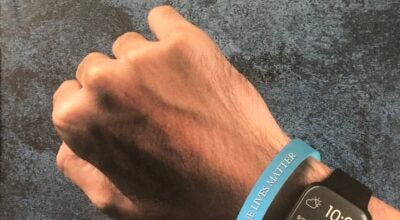Phil Hardy: Brown Thrasher — state bird
Published 11:27 am Saturday, September 29, 2018
The year 2018, “is to be celebrated as the Year of the Bird” declares the Cornell Lab of Ornithology, National Audubon Society, Bird Life International and National Geographic. This declaration is in part because this year marks the 100th anniversary of a law that was signed into effect that offers many birds protection: The Migratory Bird Treaty Act. Even 100 years ago folks were aware of the declining numbers, hardships, and serious threats birds were facing. So, look for various media outlets to promote an awareness of birds through social media, radio, magazines, newspapers, and television with editorials, content, and programs this year.
What better bird can there be to celebrate than the official state bird of Georgia — the Brown Thrasher? But how did this beautiful songbird get selected as our official state bird? I did an internet search and found the following explanation on answers.com.
“In 1928, the school children of Georgia selected the Brown Thrasher as the state bird. According to Nature Magazine (April, 1932), “The campaign was inaugurated by the Fifth District of the State Federation of Women’s Clubs and was sponsored by the Atlanta Bird Club and kindred groups.” Proposals were made to the Legislature and bills to adopt the Brown Thrasher as the state bird were introduced, but no action was taken. On April 6, 1935, the Brown Thrasher was declared the state bird of Georgia by proclamation of Governor Eugene Talmadge. Thirty-five years later, at the urging of the Garden Clubs of Georgia, the Georgia General Assembly passed Joint Resolution No. 128 that designated the Brown Thrasher the official Georgia State Bird and the Northern Bobwhite the official Georgia State Game Bird. The resolution was approved on March 20, 1970.
Apparently the most popular state bird in the USA is the Northern Cardinal with seven states claiming this gem, dressed in his robe of red.In second place is the Northern Mockingbird with five states laying claim to this songster as official state bird. But did you know there is only one state that claims the Brown Thrasher as it’s official state bird?
In my humble opinion the Brown Thrasher is one of the loveliest songbirds we have. Count yourself fortunate if you have seen this secretive and skulking species. But you can bet your lucky rabbit’s foot that you will hear this species as he bursts out in song from February through July in Georgia. Both sexes appear rufous-colored on their backs while throat and belly areas are white with blackish streaked spots.
My favorite thing about our state bird is the beautiful song they perform. Brown Thrashers are in the family Mimidae (Latin for mimic) which includes New World catbirds and mockingbirds. Birds in this family have the remarkable ability to replicate the songs of other birds as well as sounds they hear. As a matter of fact, ornithologists have recognized over 1,100 different songs that the Brown Thrasher can sing. The most amazing thing is that they aren’t born with this ability; they have to learn the songs!
If you grew up in Georgia, like I did, without air conditioning, chances are good you may have heard the Northern Mockingbird sing his song seemingly all night long because windows were raised to let in the cooler night air in the spring and summer. Not so the Brown Thrasher. He is a day time singer and a good one. If I had to compare the Brown Thrasher’s voice to a human it would be Roy Orbison. It is rich, pure, smooth. and melodious.
As Thoreau planted his fields in Walden, he wrote of the red mavis (Brown Thrasher) that the bird cried from the tree top advice on how to plant his seed: “Drop it, drop it, — cover it up, cover it up, — pull it up, pull it up.”
Brown Thrashers prefer thick cover of shrubbery, trees, and vines for nests. Some have even been known to nest directly on the ground. In my yard, they especially like the inside of azaleas for thick cover and concealment of eggs and young.
In the spring, I observe the parents foraging for food items which mostly consists of beetles, arthropods, fruits, and nuts. They mostly feed on the ground where they use their long bill to swipe left and right exposing prey items from leaf litter and mulch. At times, they can make a mess in doing so. I find their thrashing about enjoyable as well as entertaining to watch, especially when they have young to feed. In June, when my blueberries ripen, I certainly don’t mind sharing my bounty with this cinnamon-colored beauty.
Take the time to familiarize yourself with the official State Bird of Georgia —the Brown Thrasher. You will be glad you did. And remember to protect our native wildlife by keeping your cats indoors.
Phil Hardy, a bird watcher and bird photographer, lives in Americus.



